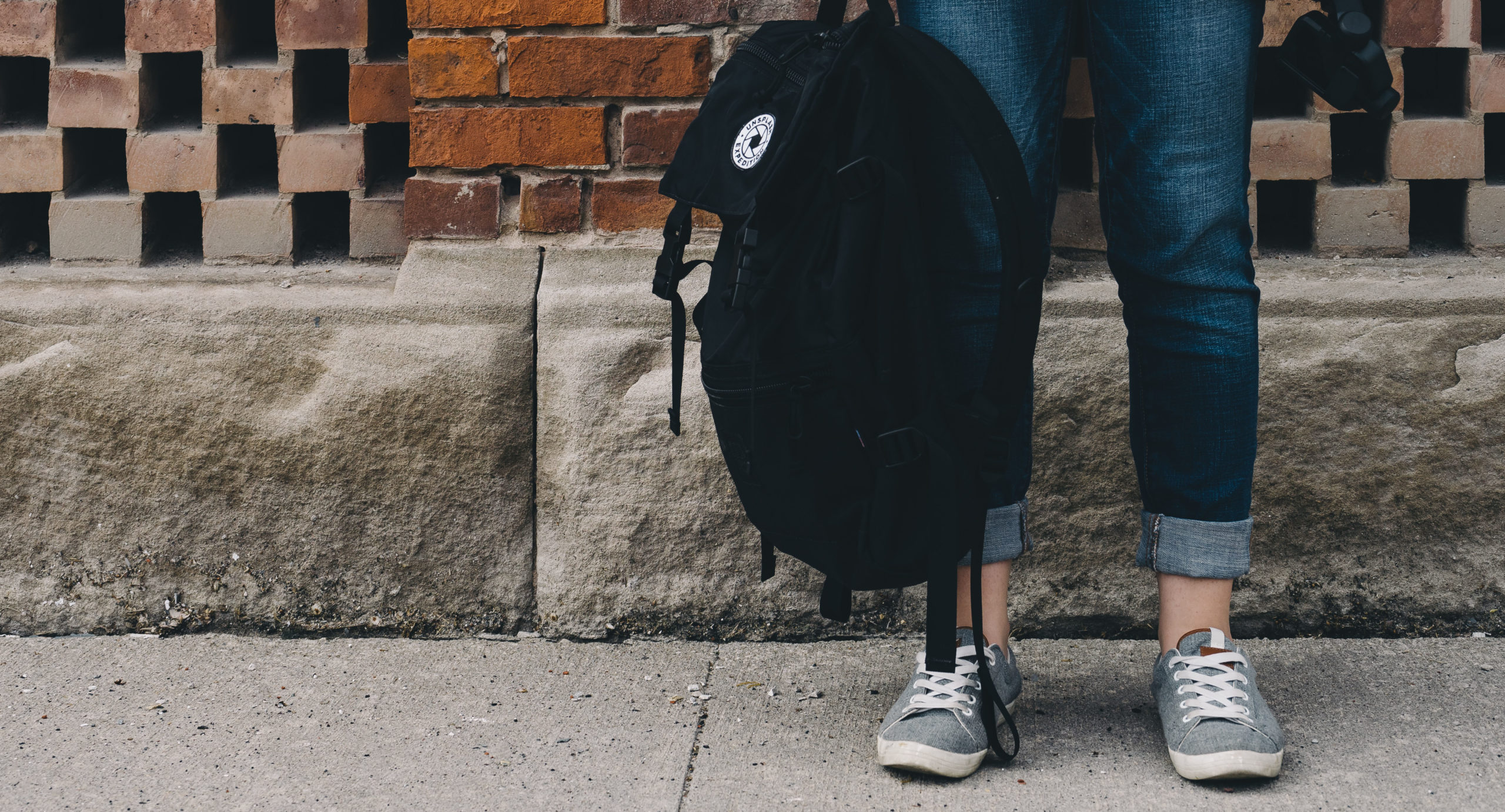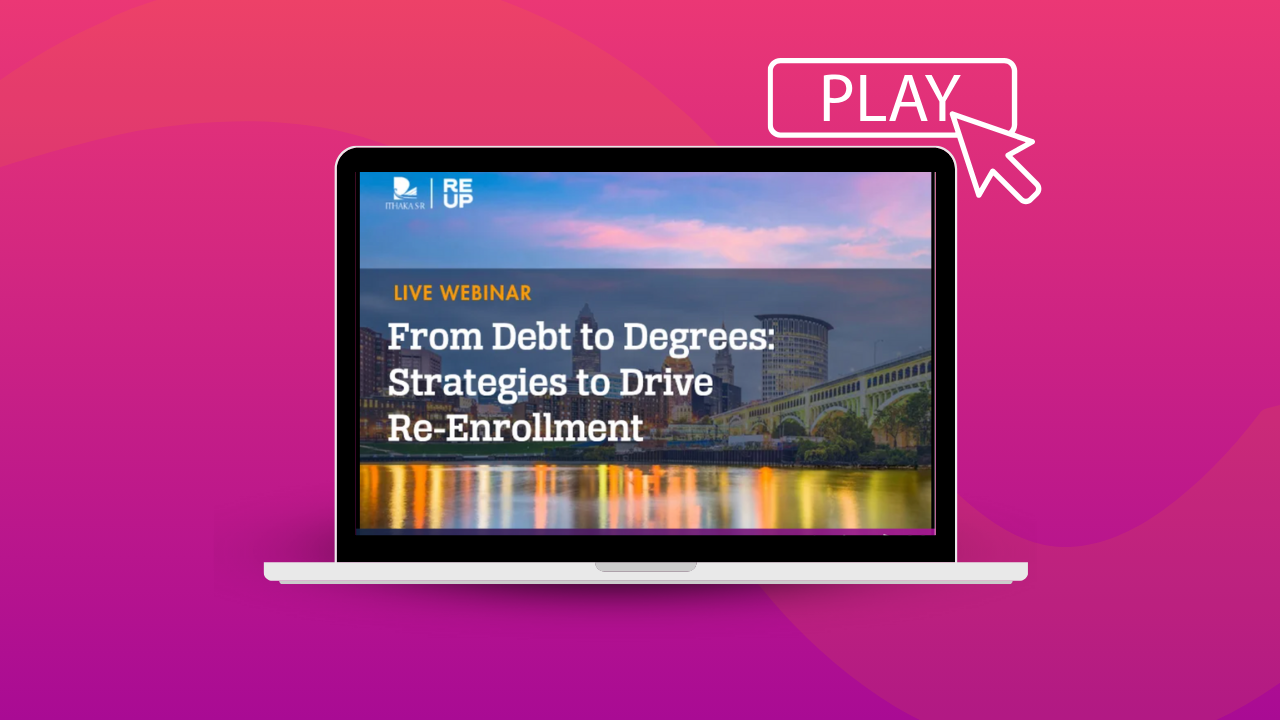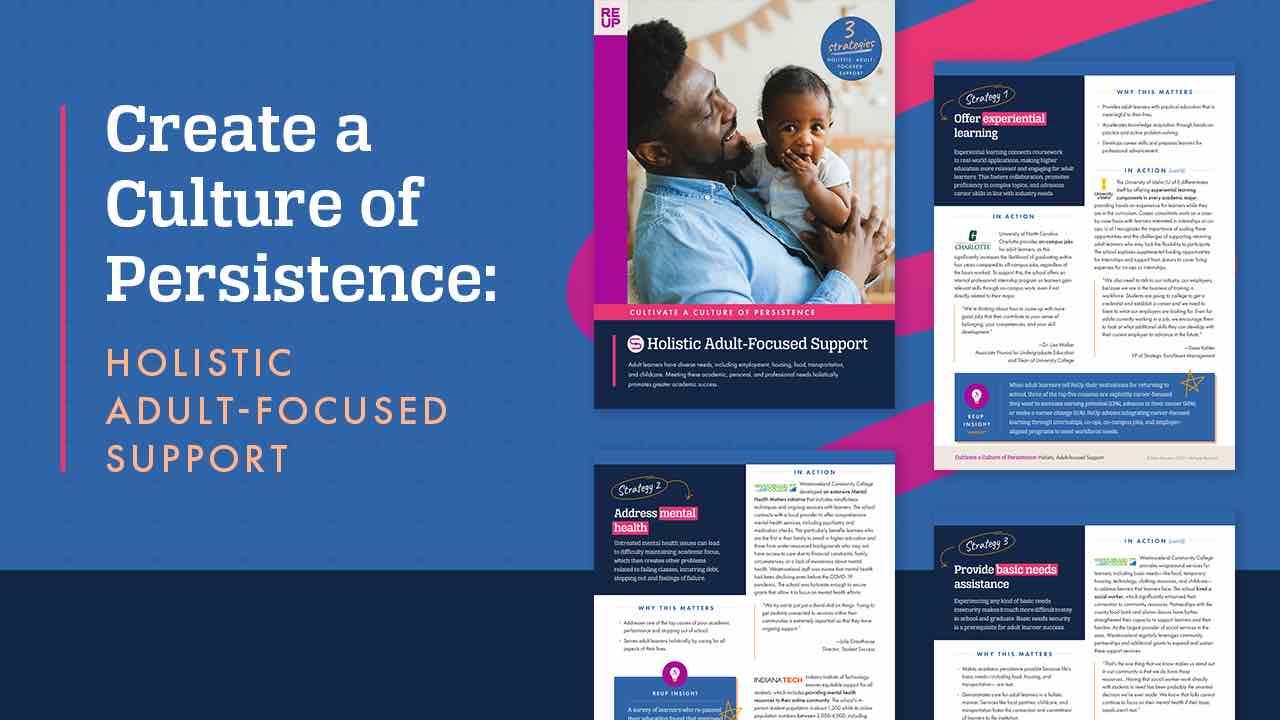There’s been a recent shift in how higher education professionals are talking about stopped out students, or “some college, no credential” (SCNC) learners. Where it once seemed like many institutions were asking “shouldn’t we be doing something for adult learners?” the conversation seems to have shifted to: “here’s what we’ve tried, what are other schools trying?”
As an organization focused on engaging, re-enrolling and supporting this unique population of SCNC learners (40.4 million and growing), ReUp gathers data based on student feedback that informs best practices for our state and institution partners.
Bringing several key questions into conversations with institution and state partners, ReUp assists their re-enrollment strategy and offer solutions. We then assist them in developing policies, programs, and services that help returning students and adult learners achieve their higher education goals.
Here are four questions that colleges and universities should ask themselves to inform their re-enrollment strategy:
-
-
- How will our re-enrollment process differ from our first-year student enrollment process? Prospective returning students often explain to our Success Coaches that they are concerned about feeling a sense of belonging once they go back to school, and that this factors into their decision to return. They can be sensitive to the fact that most college systems cater to first-year students entering directly from high school; and as they begin to take steps towards re-enrolling, adult learners often encounter traditional college procedures that reinforce their worst fears.For example, policies that require immunization records as a part of enrollment, in order for students to then be permitted to live on campus, are irrelevant for returning students and can create an unnecessary barrier to re-enrollment.Similarly, many colleges and universities have an enrollment sequence that requires any student not enrolled in the previous term to pay an application fee—then, after they are admitted, to meet with an academic advisor for guidance on offered courses.This is logical flow for a first-time student, but it doesn’t make much sense for a returning student that only needs a couple of specific courses to graduate. In the worst case scenario, a prospective returning student can get trapped in a cycle of re-applying just to find out their needed course(s) are not offered that particular term.
- How are we personalizing the experience for returning students? Our student data has shown that SCNC students may share some significant details in common, but they can’t be viewed as a monolithic population, as they do not all face the same barriers to earning a degree or credential. A returning learner that left because of family commitments, for example, experiences a different kind of journey than a student that stopped out for health reasons.Our research reveals that there are a host of factors that influence the dynamics of a returning student’s journey:
- How long the student has been gone for
- What kind of motivation is driving them to return
- Whether they still live in the same region
- The extent to which their career aspirations have changed and/or their original degree program still aligns with their goals
- Whether they have become a parent or not
- Their ability to fund college
These 40.4 million students are in the same situation on paper, but the situation looks quite different in each case once you drill down to their motivations, goals, and barriers.
Outreach that feels more personal and relevant to an adult learner should include the following characteristics:
- Content that supports unique needs. Students facing internal challenges (motivation, follow-through, time management, etc), benefit most from personal relationships that provide accountability. Students that have external challenges (technical or process-related, financial) may find assistance in navigating the system more valuable.
- Well-timed messaging. If a student is on a more extended timeline to return, it typically makes sense to check in less frequently than a student that has fewer barriers in their way and is on a more immediate timeline to return. Conversely, if a student is more likely to be prepared to return in the near-term future, it is beneficial to talk about specific readmission deadlines.
- The right engagement channel for the right student. While some students may find texting the easiest way to communicate, others may prefer an email or phone call. Pinpointing student communications preferences early on, and offering multiple options, increases the likelihood of high engagement.
- Are we supporting returning students post-enrollment? Most institutions provide a set of counseling, tutoring, career, and other professional services to assist students using a reactive model. This works well for learners that already know these services exist, are available during office hours, and feel comfortable proactively seeking help.But a reactive model does not work for everyone—students that haven’t been enrolled for years are more likely to live off campus and work during business hours. What’s more, many are first-generation students that don’t have a family member to help them navigate the college system, and they may not be aware of everything on-campus support teams have to offer.To connect returning students to the resources they need for success, ongoing proactive outreach is necessary, as it changes the dynamic of the institution’s approach to offering assistance. Through a proactive model, the institution is aware of challenges sooner, and turnaround is quicker and streamlined. This means the institution is working more efficiently, resulting in stronger ROI for student support resources overall.
- How are we sharing the success of returning students? Higher education has long looked at four-year and six-year graduation rates as the ultimate measures of completion. What happens when re-enrollment strategies yield higher graduation rates, but those graduates don’t fall within the typical completion window–are these results still worth sharing?We think so (see our Learner Stories here). The stories of adult learners, those that just wanted to follow new career aspirations, become a role model to their children, or just finish what they started, are inspirational and deserve to be shared widely.Adult learners benefit from seeing that someone like them has been able to complete their education goals. Not unlike their students, colleges and universities also benefit from seeing that another institution “like me” has implemented a stopout-focused strategy that proved effective at increasing re-enrollment and completion.ReUp is uniquely positioned to help a variety of institutions and state systems re-engage with and support SCNC students through a combination of adult learner experience strategy, success coaching, and institutional insights.
-



